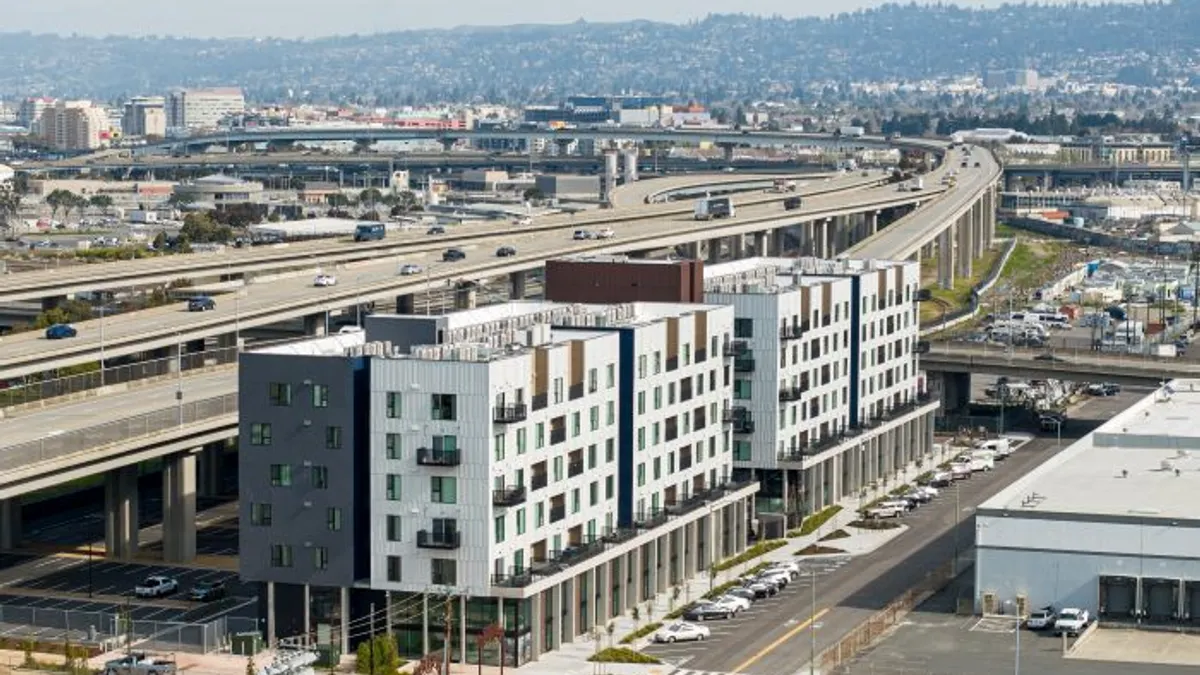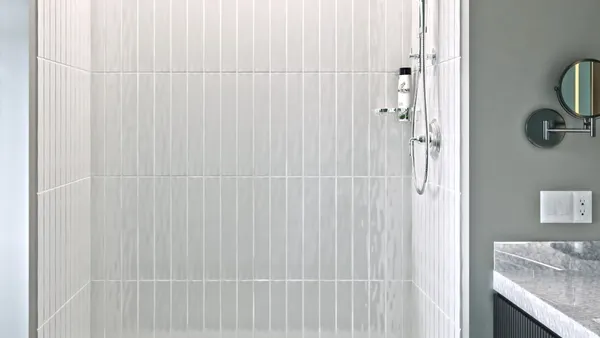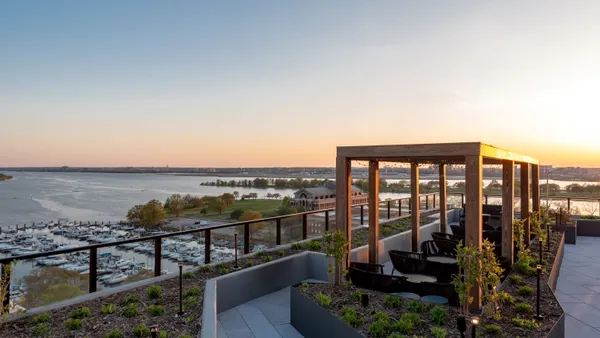After nearly a decade in development limbo, the 235-unit Prescott Station apartment property is opening its doors in Oakland, California, with the help of modular design.
Originally entitled in 2012, Prescott Station was paused for nearly a decade before Alameda, California-based MBH Architects was brought on board in 2021 to reinitiate design and guide the project through construction as both modular and site architect, according to Timothy Haley, the project’s director at MBH.
The six-story project, located on the former site of one of Oakland’s largest encampments of people experiencing homelessness, made use of off-site construction to help provide its income-restricted housing, according to MBH. The building consists of a five-story modular structure over a podium, with units composed of one or two volumetric models, ranging from studios to two-bedroom apartments.
The architect had worked previously with the project’s builder, Vallejo, California-based Harbinger Homes — formerly known as Factory_OS — on other projects throughout California. “That familiarity with both the technology and their internal processes gave [Oakland-based developer Holliday Development] confidence that we could navigate the project’s restart,” Haley told Multifamily Dive.
Here, Haley talks with Multifamily Dive about the benefits and challenges of modular construction and plans for future projects.
This interview has been edited for brevity and clarity.
MULTIFAMILY DIVE: How did you accommodate the site’s design and compliance needs within the modular framework?
TIMOTHY HALEY: Fitting multiple unit types into a consistent modular grid required early and deliberate design coordination. Our grid aligned closely with conventional framing standards, but we had to be surgical in how we approached plan layouts, window placements and adjacencies.
To meet the private open space requirements, we designed prefabricated balconies that were fabricated offsite and attached during installation. These “plug-in” components allowed us to remain within the modular delivery model while ensuring zoning compliance. It's a great example of how modular doesn’t mean inflexible — it means planning ahead to enable performance on all fronts.
What benefits did modular construction provide to the project?
Modular gave us several significant advantages—some predictable, and some uniquely valuable given the project’s urban location.
Once modules were on site, the pace of construction was dramatically accelerated. Controlled factory conditions ensured consistency in detailing, finishes and building envelope. Both hard and soft costs came down thanks to tighter scheduling and minimized weather-related delays.
The project saw a reduction in carbon footprint and construction waste, with factory efficiencies making a meaningful impact. Because modules were delivered with gypsum board already installed, we reduced the on-site fire load — a major benefit in dense urban areas. Less time “open” on site meant lower exposure to theft, vandalism or environmental damage.
What are the biggest challenges you faced in this development?
The biggest hurdle was coordination — educating and aligning site contractors and subcontractors unfamiliar with modular methods. Unlike conventional builds, modular construction demands tight sequencing and discipline across trades. You need a team that understands the interdependencies between the factory-built components and site-built systems.
It’s not just about assembling boxes — it’s about planning every connection, every tolerance, every delivery window.
Do you anticipate doing further modular projects?
Absolutely. MBH has completed over 2,200 modular units to date, and we have more in the pipeline. That said, we view modular as one tool in a broader toolkit.
It’s ideal for certain project types — especially mid-rise multifamily housing where time, cost and logistics are critical factors. But it’s not a one-size-fits-all solution.
The bigger issue is the housing crisis. We believe the industry needs to approach it from every possible angle — modular, conventional — all depending on the site, the budget, and the timeline.
Modular is a powerful strategy, but it's not magic. The real advantage of modular comes when you integrate it into the project strategy from day one — aligning design, budget, logistics and schedule early to maximize efficiency.










